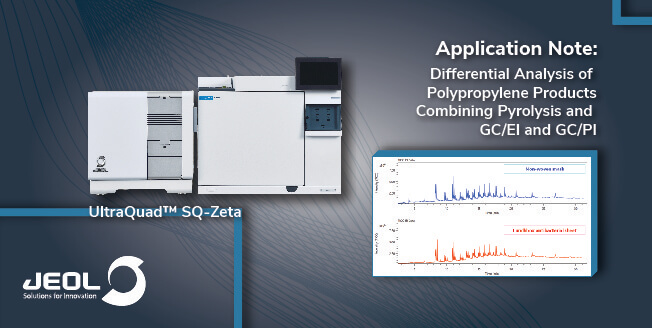
Gas chromatography-quadrupole mass spectrometry (GC-QMS) is widely used for both qualitative and quantitative analysis of volatile compounds. Qualitative analysis by GC-QMS is generally performed by searching the library database (DB) using electron ionization (EI) data. However, if qualitative analysis is performed using only the similarity with the library spectrum as an index, several significant candidates may be obtained depending on the compound which in turn could lead to the selection of an incorrect candidate. In these situations, molecular ion confirmation by using soft ionization (SI) methods such as photoionization (PI) can be effective for helping with proper identification.
In 2018, JEOL Ltd. released “msFineAnalysis”, an integrated qualitative analysis software that automatically combines the analysis results of EI and SI measured by a gas chromatograph high resolution time-of-flight mass spectrometer (GC-HRTOFMS). While msFineAnalysis was originally developed to analyze accurate mass data, the integrated analysis technique used by this software can also be effective for the analysis of low resolution, integer mass data as well. Consequently, we developed “msFineAnalysis iQ” to support integer mass data measured by GC-QMS.
In MSTips No. 347, we showed the effectiveness of msFineAnalysis iQ for combining EI and SI data for the integrated qualitative analysis of commercial polypropylene products. As an additional capability, msFineAnalysis iQ is also equipped with a two sample comparison (differential analysis) function, which can be extremely helpful for materials analysis. In this work, we use this differential analysis function to compare two commercial polypropylene products.





